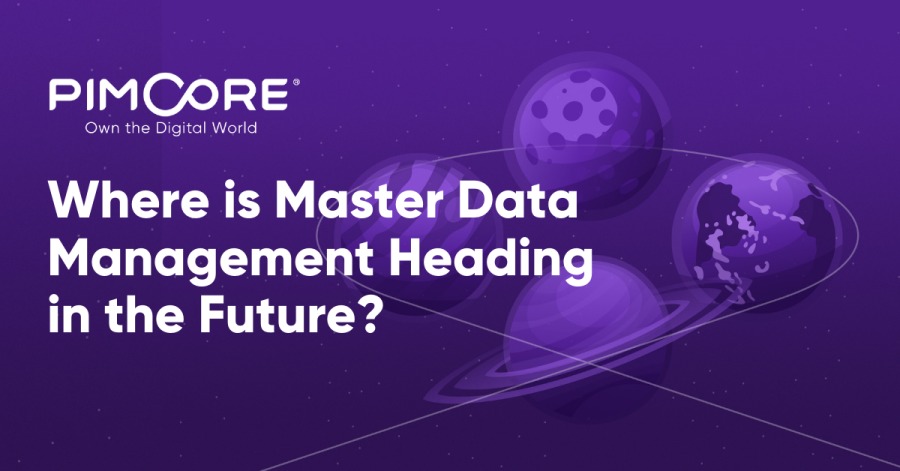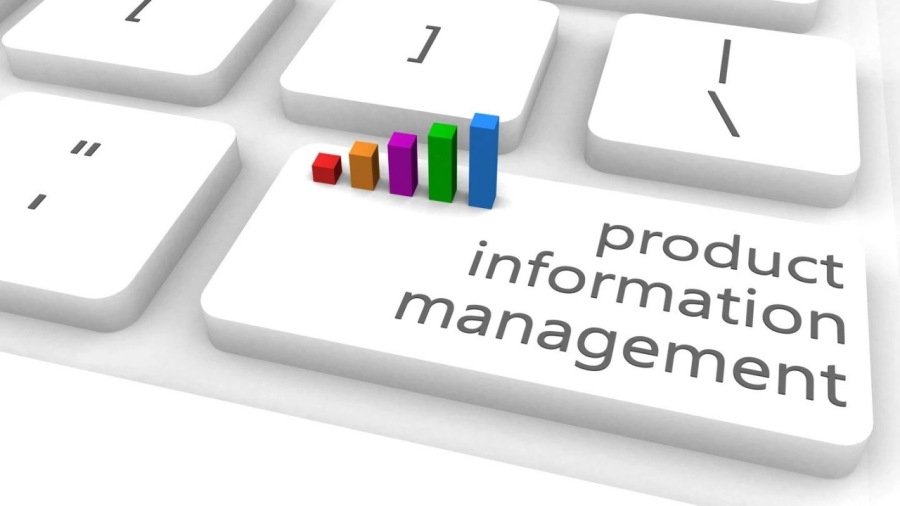Where is Master Data Management Heading in the Future?
Data culture is the new normal. A data-driven culture empowers organizations to innovate faster, continuously improve through real-time feedback and responses, and make smarter business decisions. But for CIOs and chief data officers (CDOs) it’s still a big challenge to feed each function of their organization — think operations, IT systems, marketing, sales, finance and customer service — with an enriched and single source of information. And for those committed to staying at the cutting edge of automation, artificial intelligence (AI), internet of things and blockchain, mastering the art of data management is going to be even more vital in the near future.
Organizations have no choice but to be smart and creative about managing the exploding volume of data coming from diverse sources if they want to perform deeper analysis, build new relationships with customers and drive decision-making insight for faster growth.

We are seeing a substantial rise in interest from CIOs looking to implement master data management (MDM) solutionsto streamline their rapidly growing complexity and distribution of data, with greater quality and governance. However, CIOs and CDOs should recognize and embrace those MDM trends that can unlock the full value of data in pursuit of competitive business advantage. Here are the key MDM trends to look at in the months ahead:
A Broader Spectrum of Industries Will Adopt MDM
CIOs are continuously focusing on digitalization to craft a new dynamic for their customers in new and emerging industries. They recognize the need for an accurate, consistent and trusted version of master data — enterprise-wide and across more data domains.
This year, we will see more CIOs leading IT focus on high availability master data to establish advanced data and analytics capabilities, and carve a competitive differentiation in their market understanding.
Earlier, industries like financial services, healthcare and retail were the front runners in adopting MDM solutions largely because of compliance requirements, product information rationalization and risk management. For example, the healthcare industry has started implementing MDM to simplify physician spend compliance and avoid regulatory breaches or any severe regulatory actions/penalties. The financial industry has benefited from MDM by augmenting their existing customer information management systems for cross-selling and upselling opportunities and risk management. And the retail industry started leveraging MDM for rationalizing their product information and improving customer experiences.
Recently, more and more industries such as telecommunication, consumer packaged goods, and manufacturing have begun to implement MDM programs and enabling technology required to support it. The telecom industry is using MDM to create a single trusted source of data, particularly for product data and customer data. This enables them to speedily build or customize service-oriented architecture composite applications for new product bundles or services. MDM is enabling consumer packaged goods companies to create a holistic view of operations and sales to boost revenue. The manufacturing industry is using MDM for inventory management optimization by establishing a trusted view of product and material data.
Thus, MDM spending will intensify across a wider spectrum of industries.
Disruptive Forces Will Solidify the MDM Role
Organizations are focusing on getting a 360-degree view of customers, delivering an omnichannel experience and ensuring excellent overall product experience management.
Conversational technologies such as AI-based voice assistants, chatbots or intelligent personal assistants are acting as disruptive forces on the market, especially in improving customer experience.
Intelligent conversational, critical capabilities of MDM are going to play an essential role for greater accuracy and real-time availability of information. For example, to train any chatbot or virtual assistant, accurate, trusted, well-organized and metadata-tagged data is essential. For a seamless product discovery experience through voice-only interfaces (think Amazon Echo or Google Assist), a lot relies on how fast, clean and efficient your data is.
In 2019, we will see more innovations emerge as organizations look to align their business models with their customers’ need to be in control of how their data is used and how their time is spent.
The Demand for Multi-Domain MDM Will Rise
Generally, we see MDM of customer data and MDM of product data. In the past, the selection of MDM solutions was based on a specific business requirement. The most widely used solution was a single data domain that focused on a single business process like customer data and product data.
More recently, other domains have also attracted some customer interest; these domains include digital assets, supplier data, hierarchy, geospatial and reference data.
According to Gartner, multi-domain, and multi-vector, MDM enables the digital business to advance from "collecting" data for a single data domain to "connecting" several data domains.
Multi-domain MDM solutions help organizations resolve entities, discover relationships, make connections and as a result, develop new growth opportunities. For example, it will speed the time-to-market as newly introduced products will connect the product, customer and supplier in a nimbler way.
Gartner projected the market will evolve toward multi-domain MDM requirements in its 2018 Magic Quadrant for Master Data Management Solutions — where it noted 58% of reference customers indicated some level of multi-domain MDM requirement.
Cloud-Based Deployments Will Increase
The demand for cloud-based MDM will rise in 2019. This is due to the continuous need for application migration and associated databases to be consolidated. Cost reduction along with agility and capacity are vital factors that are making a stronger case for cloud-native MDM solutions.
Besides that, data matching and integration, data modeling and a single, trusted view of master data are easier in cloud deployments. According to Gartner, by 2020, 75% of organizations that allow the deployment of cloud-based business applications to occur outside the auspices of an information governance practice will erode the business value of their information assets by at least 50%.
Machine Learning and AI in MDM Will Come to the Fore
Every industry vertical is experiencing the buzz around machine learning (ML) and AI, and the MDM market is no different. Enterprises have started considering MDM solutions with ML and AI capabilities, but it will take time to reach a more mature level.
Automation and AI help organizations to perform repetitive, predictable master data tasks without errors — or handle those tasks completely and engage with customers for higher customer satisfaction. They allow organizations to manage the ballooning volume, velocity, and variety of data across an increasing number of channels without increasing stakeholder’s headcount.
AI will also help identify duplicate records, assure data quality and enable new kinds of master data applications to create more modern customer values.
Read Whitepaper - 8 Master Data and Product Information Management Challenges You Can’t Ignore!
The Conclusion
Data-driven organizations will become more agile in how they manage their data. Market demands for MDM solutions are shifting toward where and how they add value to the business.
Thus, the focus is going to be more intelligent and outcome-based MDM implementation in terms of enabling higher revenue growth and profits, cost optimization and efficiency, regulatory compliance and risk management. What will be your focus area for a master data management strategy?
Source: The post was originally published on CMSwire.
Artikel von Rahul Singh
Blog ansehen
Open-source PIM software offers multitudes of other benefits, which goes a long way in helping busin ...

With the help of DeepL, Asioso developed a free module for Pimcore to make the work of its customers ...

Retailers have realized that the new currency in retail is convenience, which in turn hails from sea ...
Diese Stellen könnten Sie interessieren
-
Mitarbeiter:in Buchhaltung
Gefunden in: Talent AT A C2 - vor 1 Tag
conova communications GmbH Salzburg, ÖsterreichVeröffentlicht am 12. März März 2024 von Andrea ReiterMitarbeiter:in Buchhaltung · ONLINE BEWERBEN BUCHHALTUNG Mitarbeiter:in Buchhaltung (m/w/x)Teilzeit (+/- 30 Stunden/ Woche, aufgeteilt auf 4-5 Tage/Woche) · conova ist der langfristige strategische Partner für den hochverfügba ...
-

IT Helpdesk Agent
Gefunden in: Hokify AT C2 all - vor 12 Stunden
Randstad Austria Ried im Innkreis, ÖsterreichSie verfügen über eine abgeschlossene Ausbildung oder Berufserfahrung in der IT Branche? Dann haben wir genau die richtige Stelle für Sie · Für unseren Kunden in Ried im Innkreis suchen wir IT Helpdesk Agents (m/w/d). · Ihre Aufgaben: · * Betreuung der Hard- und Systemsoftware · ...
-
Küchenleitung
Gefunden in: Talent AT C2 - vor 6 Tagen
Eurest Linz, ÖsterreichZur Verstärkung unseres Teams in 4020 Linz suchen wir ab sofort Küchenleitung (m/w/x) · Abwechslungsreiche Tätigkeit von 1200 Tischgästen täglich bis zum VIP Flying Dinner · Job Facts · Bereich: Küchenleitung · Ort: 4020 Linz · Anstellungsart: Vollzeit · Beginn: ab sofor ...


Kommentare